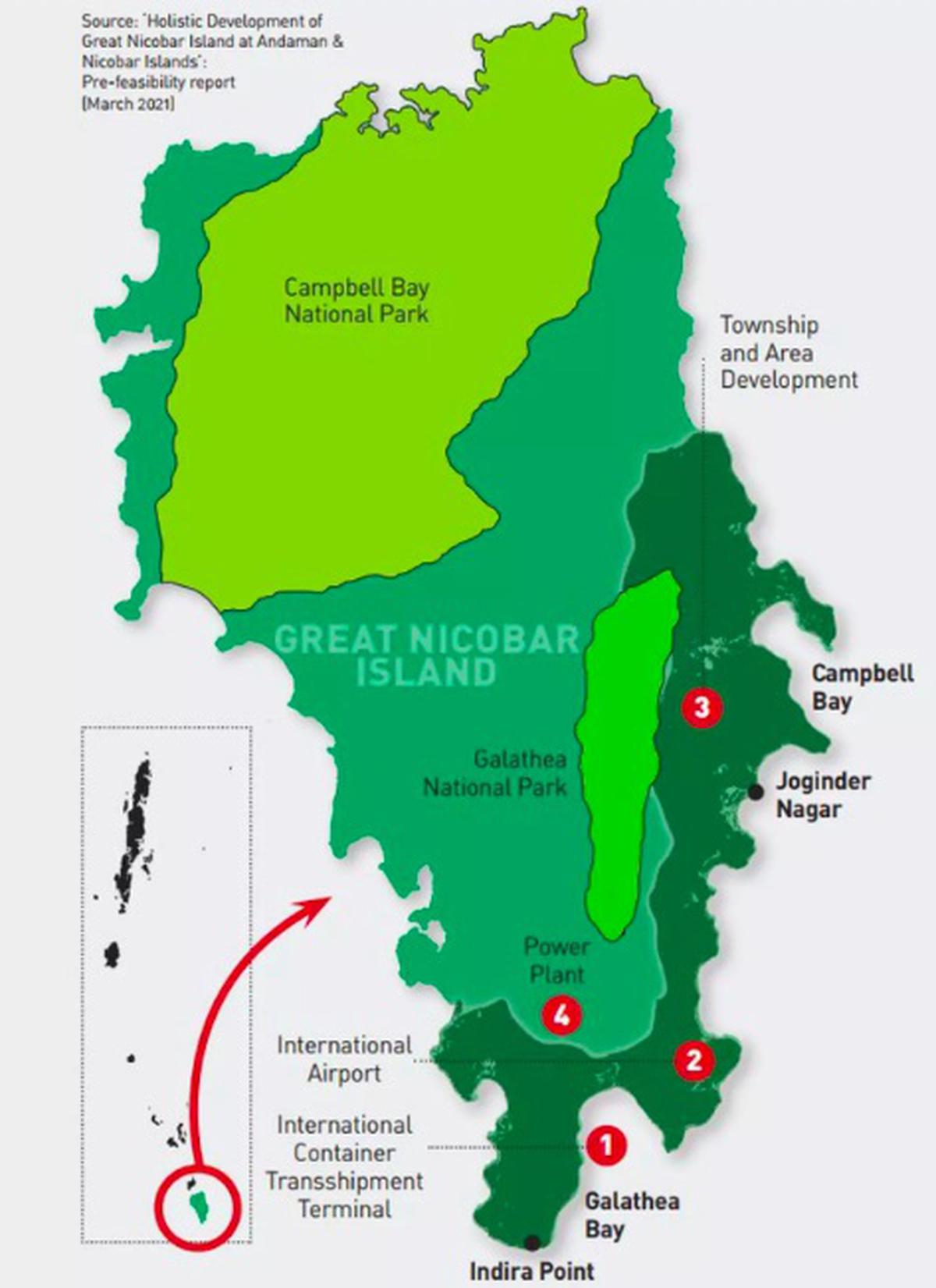In February 2021, India’s National Sea Turtle Action Plan mentioned Galathea Bay on the southeast coast of Great Nicobar Island as an “important sea turtle habitat in India”. The beaches on either side of the Galathea River are the most important nesting sites for birds in the northern Indian Ocean. leatherback turtle, the world’s largest sea turtle. The action plan states that coastal development projects including construction of ports, jetties, resorts and industries are major threats to the turtle population. But this type of development is exactly what is planned for the future of Galathea Bay ₹72,000-crore mega project Run by NITI Aayog for the “holistic development” of Great Nicobar Island (GNI), located at the southern tip of the Andaman and Nicobar Islands in the Bay of Bengal.
The giant leatherback is not the only species on this ecologically and culturally rich island, which is spread over a little over 900 sq km, of which 850 sq km is designated as a tribal reserve under the Andaman and Nicobar Tribal Tribes Protection Regulation, 1956 has been designated. The island has been home to two isolated and indigenous tribes – theI Shompen and Nicobaris – for thousands of years. The GNI was declared a Biosphere Reserve in 1989 and was included in UNESCO’s Man and the Biosphere Program in 2013. It has a unique array of micro-habitats—sandy and rocky beaches, bays and lagoons, coastal patches with mangrove communities, evergreen and tropical forests, and more. , These habitats host many species, including marine animals, reptiles, birds, mammals, trees, ferns, insects, crustaceans, and amphibians. Many of these, like the Nicobarese megapod, are endemic to the GNI and are not found anywhere else in the world.
With the Ministry of Environment, Forest and Climate Change (MoEFCC) clearing the decks for a mega project titled “Holistic Development of Great Nicobar Island” late last year, this unique ecological setting is facing significant and imminent change. is what ecologists, anthropologists, domain experts, and former civil servants have called an impending ecological disaster. However, the NITI Aayog says that its plan aims to harness the “largely untapped potential” of the island and provide “a framework for the holistic development of some of the identified islands” while preserving and maintaining their natural ecosystems and rich biodiversity. Setting up the model”.

Map of the ₹72,000 crore mega project being implemented by NITI Aayog for the “holistic development” of Great Nicobar Island (GNI). Source: Pre-feasibility report (2021)
The plan has four components – a ₹35,000 crore transshipment port at Galathea Bay, a dual-use military-civilian international airport, a power plant and a township, to be built over 30 years over 160 sq km of land. Of Which is 130 sq km. primary forest is, The northern end of the project falls in a biosphere reserve, which means that a part of this protected area will have to be allocated to the project.
Read also: The proposed infrastructure project in Great Nicobar Island is a colossal folly
As far as population was concerned, the Shompen and Nicobarese were the only inhabitants of the island until the government established seven revenue villages, housing 330 ex-servicemen families from 1969 to 1980. These three communities make up the more than 8,000 population of South Nicobar, which includes GNI, Little Nicobar and other smaller islands. The mega project will bring approximately 400,000 people to the GNI over a period of three decades, equivalent to a 4,000% increase in its current population. An estimated 8.5 lakh trees in GNI’s prehistoric rainforests are to be cut for the project.
Government approval given last year for the use of nearly 130 sq km of ancient forest land made it the largest single forest diversion in recent times and nearly a quarter of all forest land in the country has been diverted in the past three years. And the plan to divert compensatory afforestation to a remote arid region in Haryana “would be laughable if it weren’t so tragic,” the former civil servants said in a letter.
approval in haste
For a project of this scale, size and duration, there has been unusual haste in obtaining various clearances with the Great Nicobar Plan. The plan was first mooted in 2020 at the peak of the pandemic and the Port Blair-based Andaman and Nicobar Islands Integrated Development Corporation (ANIIDCO) was charged with implementing the project.
In September the same year itself, the NITI Aayog issued a request for proposal to prepare a master plan for the project. In March 2021, a little known company, Gurugram based AECOM India Pvt. Ltd, released a 126-page pre-feasibility report for NITI Aayog. MoEFCC’s Expert Appraisal Committee (EAC)-Infrastructure I initiated the environment clearance process next month and the project proponent contracted Hyderabad-based Vimta Labs to prepare the Environment Impact Assessment (EIA) report. It had received Stage-I (in-principle) forest clearance in October last year, while the environment clearance was granted by the ministry on November 11. Researchers and activists have noted inconsistencies in the chronology in which approvals were granted, with some processes having begun before the proposal was approved for them.
Read also: Center says Great Nicobar project will not dislodge tribals
Also, the way for the shipment port, the main attraction of the project, was eased in January 2021, when the Standing Committee of the National Board for Wildlife (NBWL) cleared the Galathea Bay Wildlife Sanctuary as the site for a port. it was cancelled. Soon after, the MoEFCC declared a zero-extension eco-sensitive zone for the Galathea and Campbell Bay National Parks, thus making forest land along the central and south-eastern coast of the GNI available for the project.
GNI is located in a tectonically sensitive region between the Bay of Bengal and the Andaman Sea. Researchers and NGOs across the country have raised several concerns related to the tectonic instability and disaster vulnerability of the islands, which have experienced about 444 earthquakes in the last 10 years. Tribal communities displaced by the 2004 tsunami are still recovering from its effects.